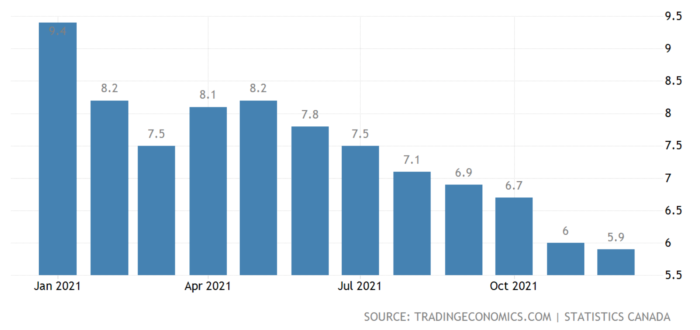2021 was a year of great resignations that triggered the new HR challenges and reprioritizations. With the talent market more competitive than ever, companies are struggling to attract and retain talented employees.
As 2022 extends the trend that the war of talent will continue heating up, some up to date datapoints can shed light on the talent market trend for the past year, while provide some key insights into how evolving employee expectations will impact talent management and more.
I compiled a list of Human Resources (HR) statistics in Canada and worldwide that can be a good reference for HR professionals to develop efficient organizational strategies:
Category 1 – HR Trends and Strategies
While recruitment remains top priority to most of the employers worldwide, “providing a great employee experience” jumped from fifth priority in 2021 to second priority in 2022. (McLean & Company, 2022)
With the pandemic leading to a significant number of layoffs, organizations of all sizes saw their HR to FTE ratios decrease in 2021 worldwide. (McLean & Company, 2022)
HR professionals’ stress levels have increased by 1.2 times compared to 2021 and 1.5 times compared to 2020 globally (n-291). (McLean & Company, 2022)
17% of companies in Canada have already integrated AI-based technology into their HR practices and another 30%plan to do so by 2022. (Randstad, 2021)
Category 2 – Salary and Benefits
Only 19% of current employers in Canada plan to increase current employees’ salaries between
3% – 5%, whereas 21% of employees remain restless and plan to switch roles in the next 3 months. (Hays, 2021)
When competing for top talent, 52% of Canadian employers would increase base salaries outside of their budgeted range, compared to 66% in 2020. (Hays, 2021)
62% of Canadian professionals say they would leave their current role if they were not provided with career growth opportunities, and 40% of employers are losing talent to higher pay being offered elsewhere. (Hays, 2021)
When talking about the most important factor aside from salary when considering a new job, 53% of Canadian employees say that benefits package – including 3+ weeks of vacation, health/dental benefits, flexible working hours and ability to work from home – is the most important factor. It is followed by career development (44%) and work-life balance (40%). (Hays, 2021)
Only 38% of employers are making changes to shift cost in their medical plans in 2022, down from 47% in 2021. (Mercer, 2021)
21% of employers in Canada say that in 2022 they will add or enhance well-being initiatives that are targeted specifically to remote workers; for example, home delivery of meals or snacks, subsidized ergonomic office furniture, or a stipend to help pay for well-being services or activities. (Mercer, 2021)
61% of Canadian employees say they expect flexible, work-from-home options to continue when pandemic-related measures end, while 40% of employers are intending to integrate remote work as part of their normal practices. (Hays, 2021)
For jobs that can be performed remotely, organizations are 3 times more likely to report that remote work has had a positive impact on talent attraction (n-313). (McLean & Company, 2022)
Category 3 – Employee Experience
21% of the hiring managers in Canada indicated that finding candidates with the right skills was expected to be the biggest challenge in 2021. (Robert Half, 2021)
76% of employees note that empathy in the workplace can lead to employee engagement and productivity. (Businessolver, 2021)
Resilience, Change Management and Design Thinking are continuing to be the top 3 high proficiencies that associated with improved organizational performance in 2022. (McLean & Company, 2022)
Leadership competencies will be a strong focus in 2022, while development of leadership and strategic competencies is overlooked in HR. (McLean & Company, 2022)
Category 4 – Diversity, Equity & Inclusion (DEI)
54% of working Canadians say that they have observed instances of discrimination towards other employees, 45%say that they’ve experienced discrimination themselves. (HRReporter, 2021)
Organizations that are not focusing on creating an environment of DEI are experiencing 1.6 times more voluntary turnover than those that are focused on it (n=414). (McLean & Company, 2022)
42% of organizations have leadership that is committed to modeling inclusive behavior and championing DEI initiatives (n=275). This is down 5 percentage points from 2021 (n=352). (McLean & Company, 2022)
Category 5 – Canadian Workforce
54% of employers in Canada planned to add new permanent positions in the second half of 2021, and another 54% plan to fill vacated positions or bring back temporarily laid off employees (n=800). (Cision, 2021)
The unemployment rate in Canada fell to 5.9% in December 2021. It was the seventh straight month of declines, despite a surge in coronavirus cases amid the spread of the Omicron variant. (Treading Economics, 2021)

For 2022 hiring plans, 43% of Canadian employers intend to keep permanent headcount steady, 36% are planning to expand their teams, while 13% of employers plan to decrease their permanent headcount in the next 12 months.
When looking at temporary and contract staff in 2022, 38% of employers expect headcount to remain steady over the next 12 months, while 14% intend to increase and decrease temporary or contract staff, respectively. (Hays, 2021)





Hi Jeslyn
I loved your blog, as an HR specialist, having useful information is always appreciated.
Thanks Rich! Glad you found helpful information here 🙂
Lot of market intel. Great blog Jeslyn 🙂
Thanks Sowmya!
This is an amazing and interesting post. I really appreciate you sharing this wonderful article here. Your efforts are greatly appreciated. https://www.mileageglobal.com/
Thanks! Glad you find it useful.